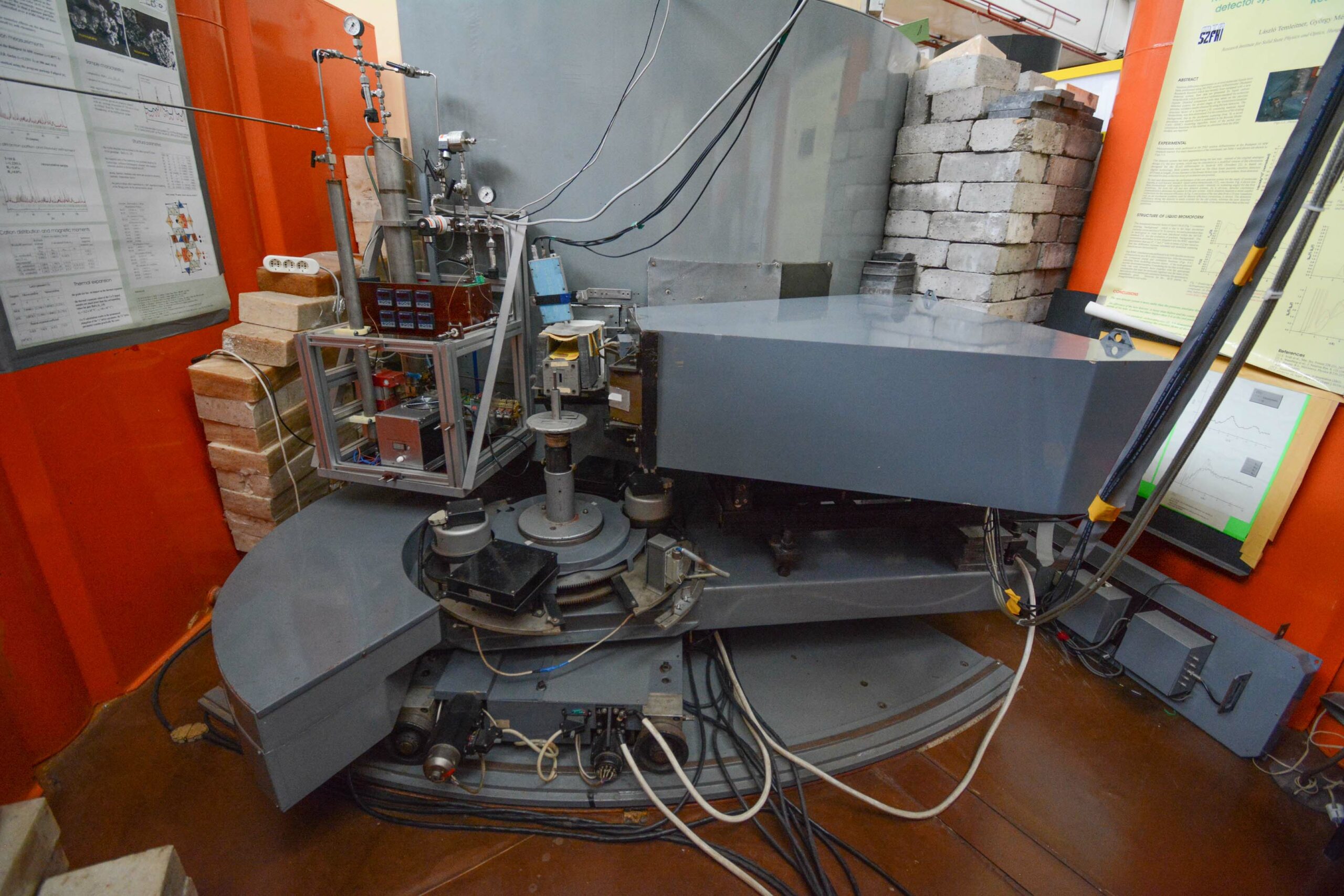- Name: Neutron Diffractometer with a Position Sensitive Detector system
- Technique: diffraction
- Range of investigated features: Q=0.45-9.8 Å−1 λ=1.069 Å
- Typical size of sample: 3-5 g
- Measurable materials: solids and liquids
- Contact: psd@bnc.hu
- Poster of the instrument

The PSD neutron diffractometer is dedicated to atomic structure investigations of amorphous materials, liquids, and crystalline materials with moderate resolution requirements. PSD is a 2-axis diffractometer equipped with a linear position-sensitive detector system. The detector assembly is mounted on the diffractometer arm and it spans a scattering angle range of 25° at a given detector position. The entire diffraction spectrum can be measured in five steps. The detector system of PSD and its digital electronics was made in Studsvik NFL. The detector system is based on three 3He-filled linear position sensitive Reuter-Stokes detectors (610 mm in length, 25 mm in diameter). The three detectors are placed above each other within the scattering plane. The dedicated electronics serve for electronic motion control and data transfer between the diffractometer and the computer. A high-temperature in-situ cell (TiZr cell, for RT to 150°C and 300 bar) is available at the PSD diffractometer.
The instrument that is capable of recording neutron powder diffraction patterns is also called ‘two-axis’ neutron spectrometer, the two principle axes being the monochromator and the sample axis. This is a very popular and useful instrument and therefore virtually every reactor source has at least one of them. The PSD diffractometer is placed on a tangential thermal neutron beam of a medium flux reactor source. Primary collimation is done before the monochromator.
The diffractometer is suitable for structural studies of powder, liquids and amorphous materials in the range of momentum transfer Q=0.45-9.8 Å−1. The wavelength selected from the primary neutron spectrum is around 1 Å (now is λ=1.069 Å), for which, in the case of Cu(111) monochromator single crystal (with a mosaic spread of 16’) a neutron flux density of about 106 n·cm-2·s-1 can be achieved at the sample position. Scattered neutrons are detected at a distance of 1.2 m from the sample by 60 cm position-sensitive 3He detector tubes (placed within appropriate shielding- the system is based on three 3He filled linear position sensitive Reuter-Stokes detectors, 600 mm long, 25 mm diameter each, the three detectors are placed in the scattering plane above each other), which span a scattering angle range of 25°. In order to cover the whole scattering-angle range up to 110°, data are collected at five different positions of the detector system. The resolution that can be routinely achieved by such a setup about is 10-2, in terms of Δd/d.
Data transfer and instrument control has been done by PC-AT (Master PC) with Eagle I/O card. A Windows based instrument software program package and the interface electronics have been upgraded. A new dedicated electronic device has been constructed, which serves for the electronic control of the movements and data transfer of the diffractometer. Recently a new sample environment element has been added. An in-situ sample conditioning cell has been designed and built for the PSD diffractometer. The temperature and pressure TiZr-cell may be operated at pressure ranging from ambient to about 300 bar and at temperatures from RT to 150°C. For powder specimens of about 3-4 g we use thin walled cylindrical vanadium sample holders with 8 mm diameter.